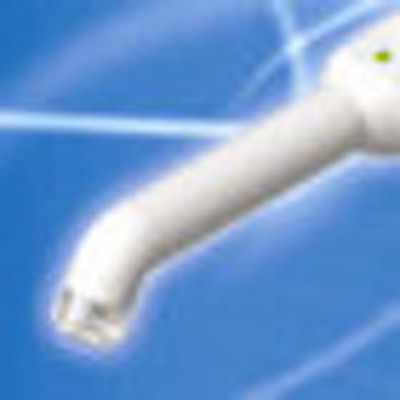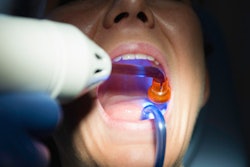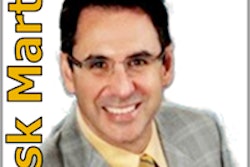
Light-curing composite resins used to be a straightforward process, when halogen lights were used to cure composites for 40 to 60 seconds. But the situation has become more complex over the past two decades; light-emitting diode (LED) curing lights have nearly replaced halogen lights, new materials keep coming on the market, and companies are marketing shorter and shorter curing times.
"Situational awareness is what you need to have now," said Kraig Vandewalle, DDS, a colonel in the U.S. Air Force Dental Corps with a background in dental research and materials testing. "The manufacturers, in my opinion, need to go a lot further in providing us information for guidance."
Dr. Vandewalle, director of dental research at Lackland Air Force Base and a professor at the Uniformed Services University of the Health Sciences School of Dentistry, emphasized the importance of understanding the basic variables related to photopolymerization in an article in the Journal of Esthetic and Restorative Dentistry (August 1, 2011, Vol. 23:4, pp. 201-204).
"The exposure time necessary to adequately polymerize an increment of composite resin depends on a complex combination of factors related to the particular curing light and the composite resin itself," he wrote. "The ultimate goal is to decrease the potential of reduced mechanical properties due to insufficient light exposure or overheating due to overexposure."
It's difficult to determine if you have adequately polymerized composite and to determine how much time is necessary, Dr. Vandewalle added. "That's part of the problem with even putting this article together," he said. "There are so many variables."
Light and composite factors
Those variables fall into two main categories: light-related factors and composite-related factors. Intensity, exposure time, spectral distribution, and light dispersion make up the list of light-related factors.
Intensity is a key factor due to its relationship with the depth of cure. While ample photons, which excite photoinitiator molecules for polymerization, are available at the surface where the light source is direct, the attenuation of light below the surface makes accurately judging the depth of cure tricky.
“Error on the side of providing too much light energy than too little.”
— Kraig Vandewalle, DDS, U.S. Air Force
Dental Corps
There are also pitfalls in exposure time. Reduced curing times of five seconds or less have been a big selling point, and while there is a demonstrated reciprocal relationship between irradiance and exposure time, that reciprocity is not completely linear, Dr. Vandewalle noted. The mechanical properties of composite resins can have their effectiveness limited with shorter exposure times, some studies have shown.
"If you go for five seconds and you're not aware of your situation, you could undercure the composite," Dr. Vandewalle said. "There could be a false sense of security when the top is cured and the bottom isn't, and that could lead to premature failure."
While LEDs have advantages over halogen, such as an increased curing efficiency, there is a potential incompatibility with certain composite resins. The spectrum from LED curing lights may not activate their photoinitiators, Dr. Vandewalle explained. However, some of the next generation of multispectrum LEDs on the market could potentially activate the photoinitiators in all composite resins.
Curing lights also differ in their light divergence from model to model. Minimal divergence and even distribution along the length of the curing light will increase its effectiveness, he noted.
Avoiding inadequate polymerization
The variables pertaining to composite resins reveal a gap in literature, according to Dr. Vandewalle. Shade, translucency, the photo initiator used and its concentration, filler particle size, load, and distribution are all factors. But how do clinicians adjust their technique to suit the composite resin being applied? Curing times are recommended, in some cases, by manufacturers, but the basis for that information is rarely available, according to Dr. Vandewalle. There is also a dearth of literature on the subject. The radiant exposure to cure different types and shades of composite resins also varies considerably, he noted.
In a study presented in March at the International Association for Dental Research meeting in San Diego, Dr. Vanderwalle and his team measured the bottom/maximum hardness ratio of different shades of different composite restoratives.
"We looked at many of these five-second curing LED lights and found that a lot of it is composite-specific -- they're able to cure some in five seconds and others they aren't," he explained. "The darker shades and true microfill composites had problems. So when companies advertise their curing lights, many don't put restrictions on their use; they may say 'lighter shades' but they don't say the type of composite necessarily."
To avoid inadequate polymerization, Dr. Vandewalle recommends exposing composite resins to more time under the curing light than is advertised.
"If you're farther away, using poor angulation and lower radiance on darker shades, you're going to have to increase the amount of exposure time," he said. "We need to error on the side of providing too much energy than too little."
Dr. Vandewalle also warned against significant overexposure. "You don't want to be sitting over the tooth for 40 seconds if you've got a high-powered light and in close proximity."
While there is a need for more information about the correlation between light-curing times and different composite resins in general, Dr. Vandewalle cited an example in which comprehensive information was provided.
"Dentsply had a chart where they had listed all their composites and shades with more specific recommendations based on using their SmartLite Max LED curing light," Dr. Vandewalle recalled. "But there are limitations to that too because it was based on that particular curing light."
What he would like to see manufacturers provide is the necessary radiant exposure for each individual shade of composite.
"Even more, they should provide ranges of time and irradiance per specific increment thickness," Dr. Vandewalle said. "They should provide a lot of detail -- that's something that they can determine in their labs. To expect the practitioner to be able to do that chairside is not realistic. The burden is on the manufacturers."
The views expressed in this study are those of the author and do not reflect the official policy of the U.S. Air Force, the U.S. Department of Defense, or the U.S. government. The author does not have any financial interest in the companies whose materials are discussed in this article.



















